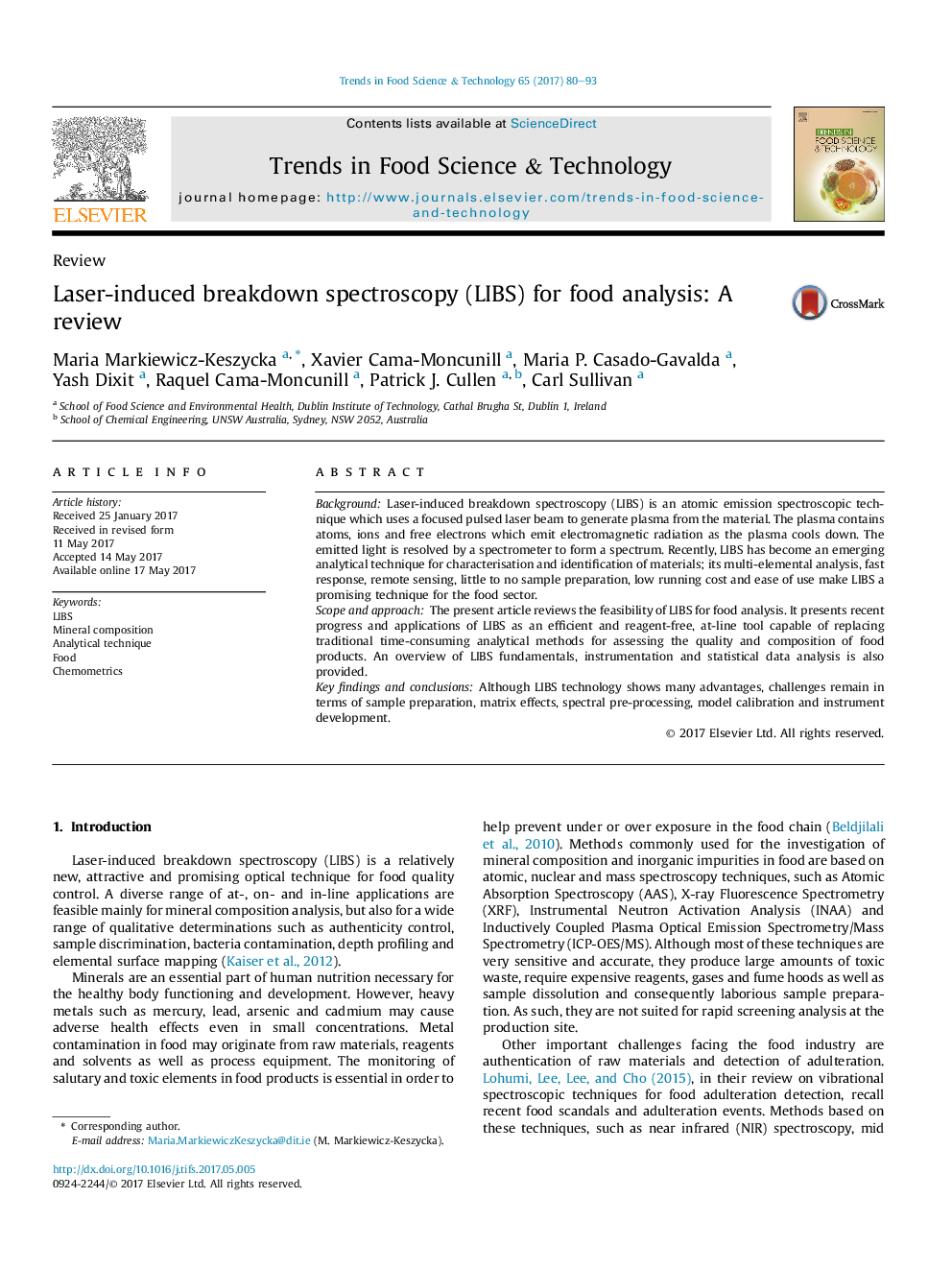| Article ID | Journal | Published Year | Pages | File Type |
|---|---|---|---|---|
| 5523747 | Trends in Food Science & Technology | 2017 | 14 Pages |
â¢Laser-induced breakdown spectroscopy (LIBS) is an optical technique capable of fast multi-elemental analysis of food samples.â¢The feasibility of laser-induced breakdown spectroscopy for the food sector has been reviewed.â¢Adulteration and mineral composition of food have an impact on global human health.â¢The request for healthy, functional and safe consumer food, mobilises research with new analytical techniques.
BackgroundLaser-induced breakdown spectroscopy (LIBS) is an atomic emission spectroscopic technique which uses a focused pulsed laser beam to generate plasma from the material. The plasma contains atoms, ions and free electrons which emit electromagnetic radiation as the plasma cools down. The emitted light is resolved by a spectrometer to form a spectrum. Recently, LIBS has become an emerging analytical technique for characterisation and identification of materials; its multi-elemental analysis, fast response, remote sensing, little to no sample preparation, low running cost and ease of use make LIBS a promising technique for the food sector.Scope and approachThe present article reviews the feasibility of LIBS for food analysis. It presents recent progress and applications of LIBS as an efficient and reagent-free, at-line tool capable of replacing traditional time-consuming analytical methods for assessing the quality and composition of food products. An overview of LIBS fundamentals, instrumentation and statistical data analysis is also provided.Key findings and conclusionsAlthough LIBS technology shows many advantages, challenges remain in terms of sample preparation, matrix effects, spectral pre-processing, model calibration and instrument development.
